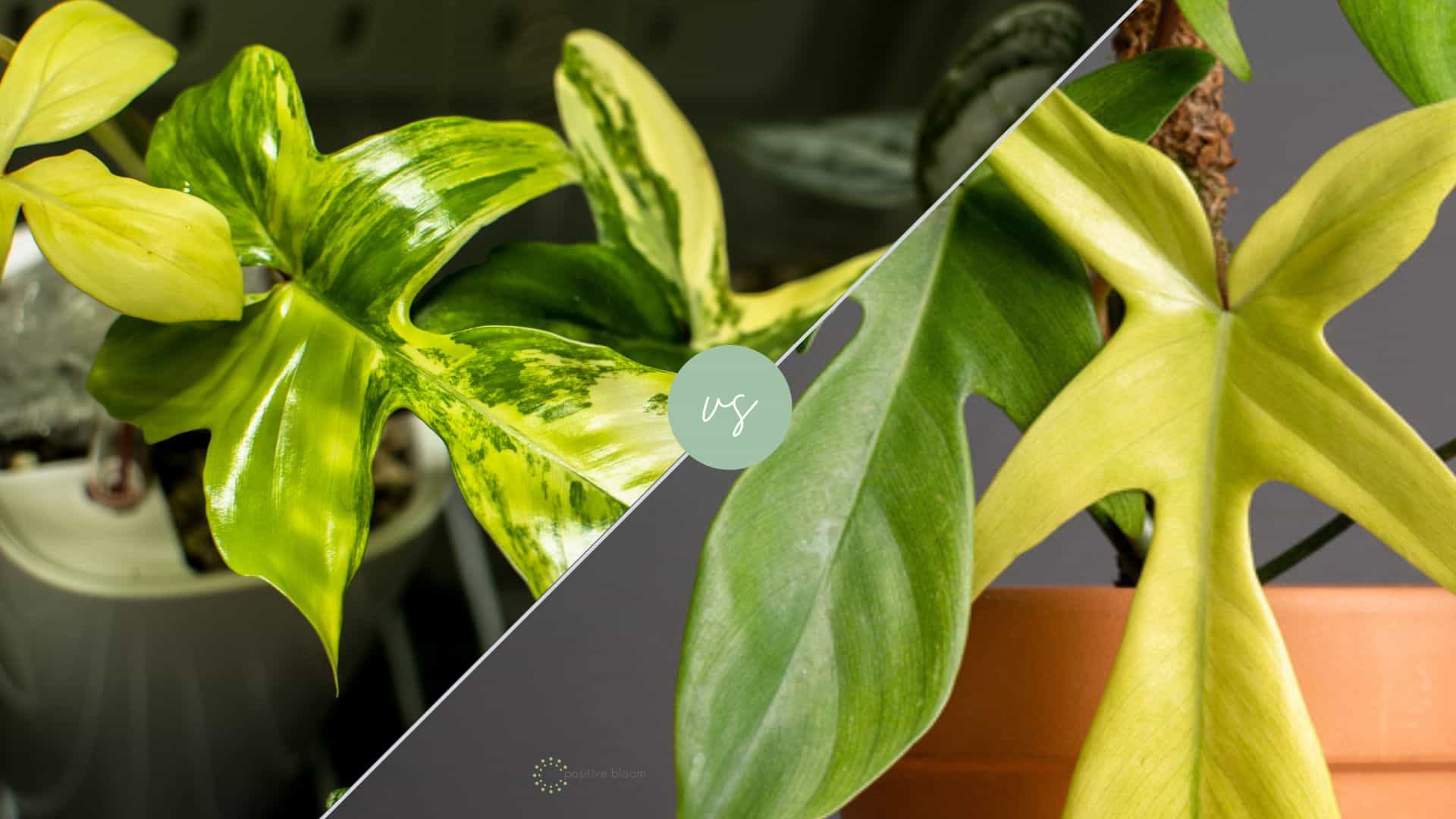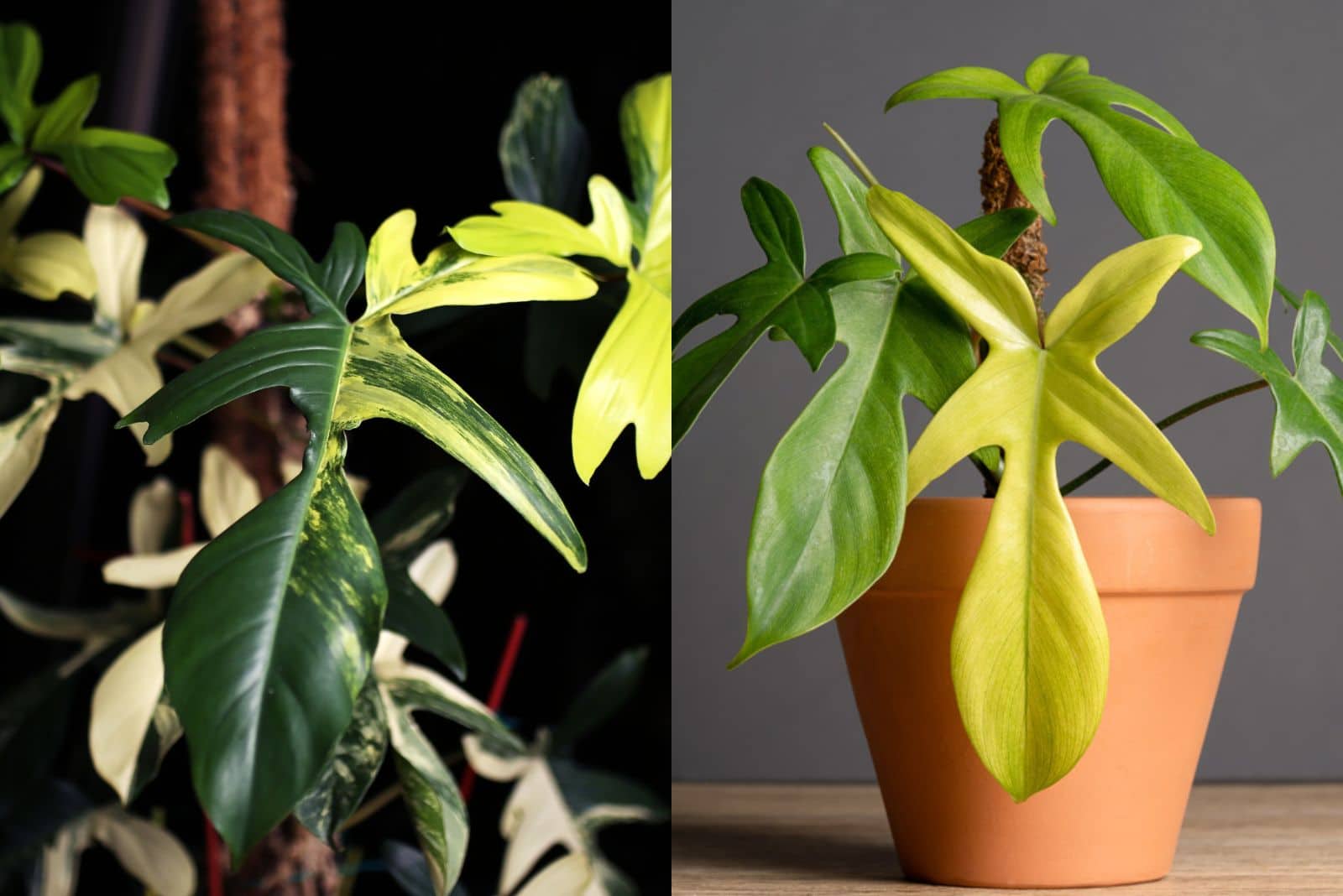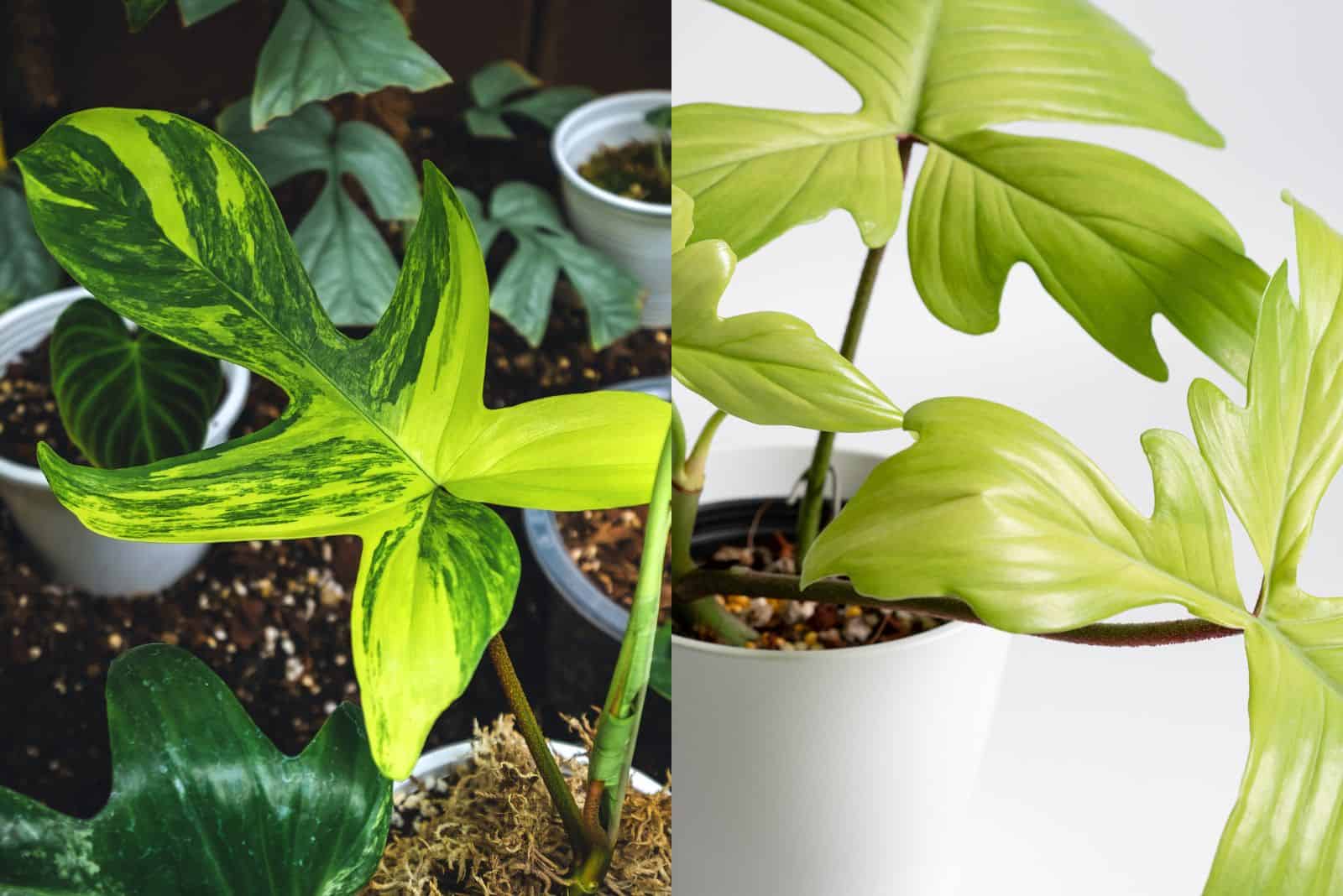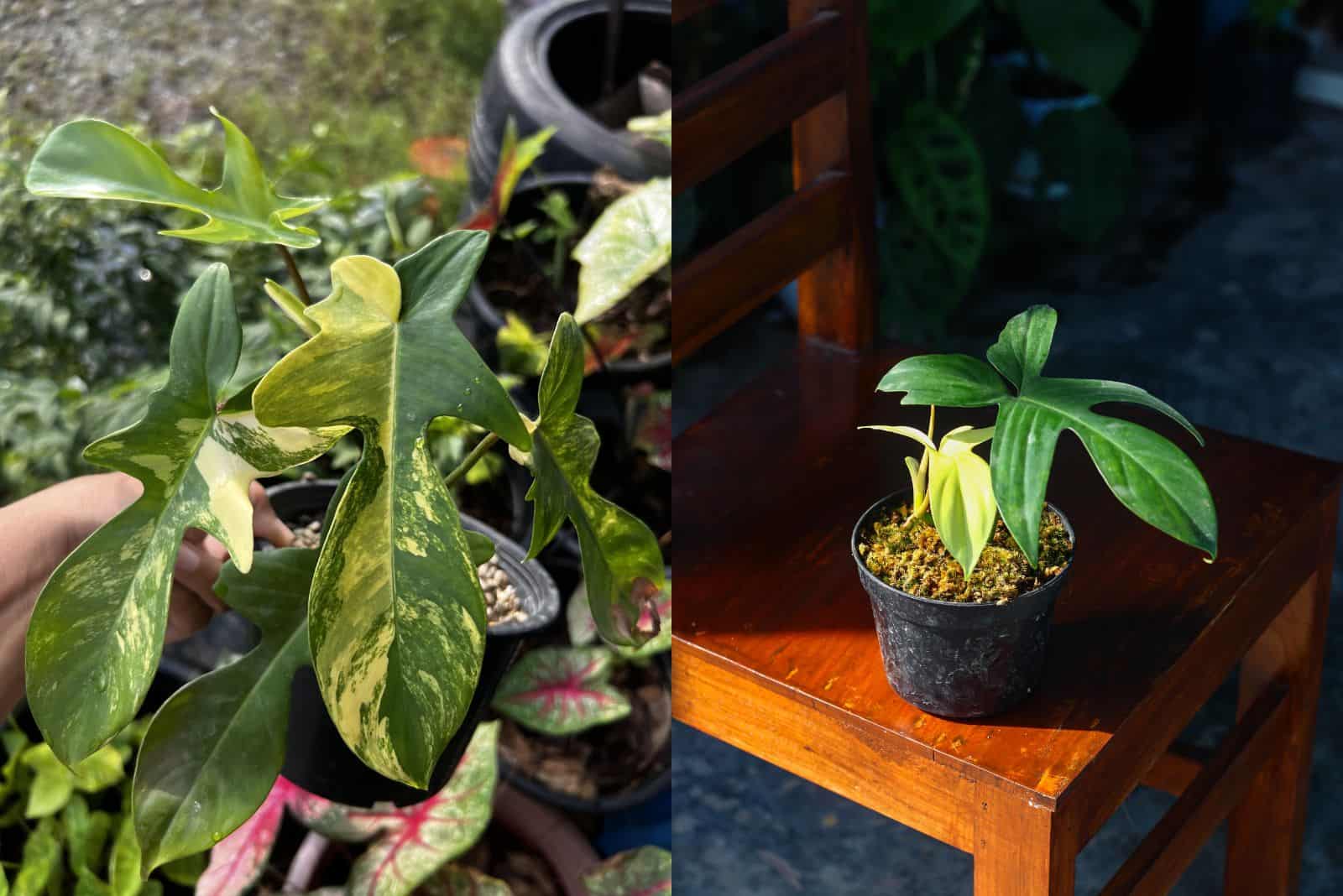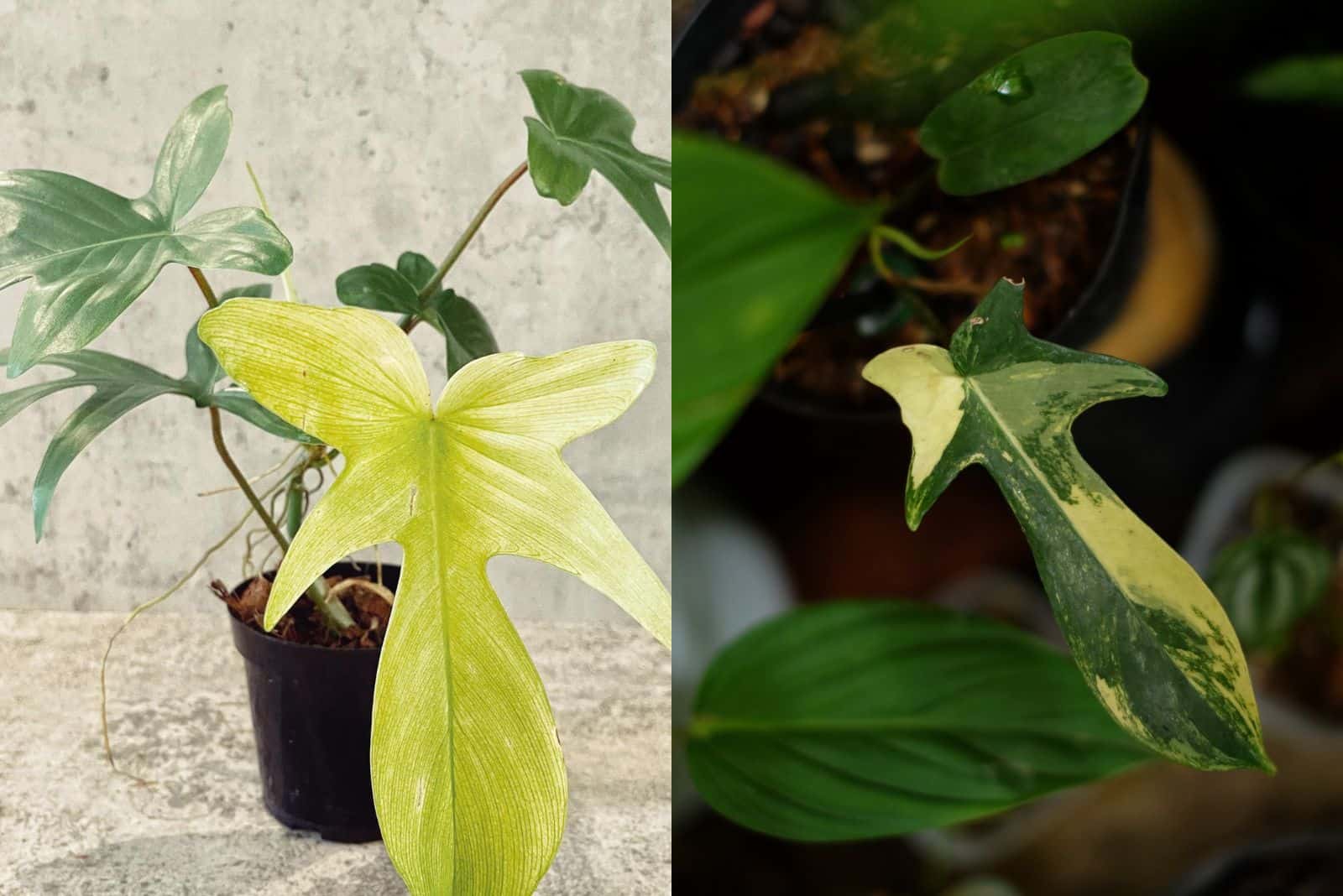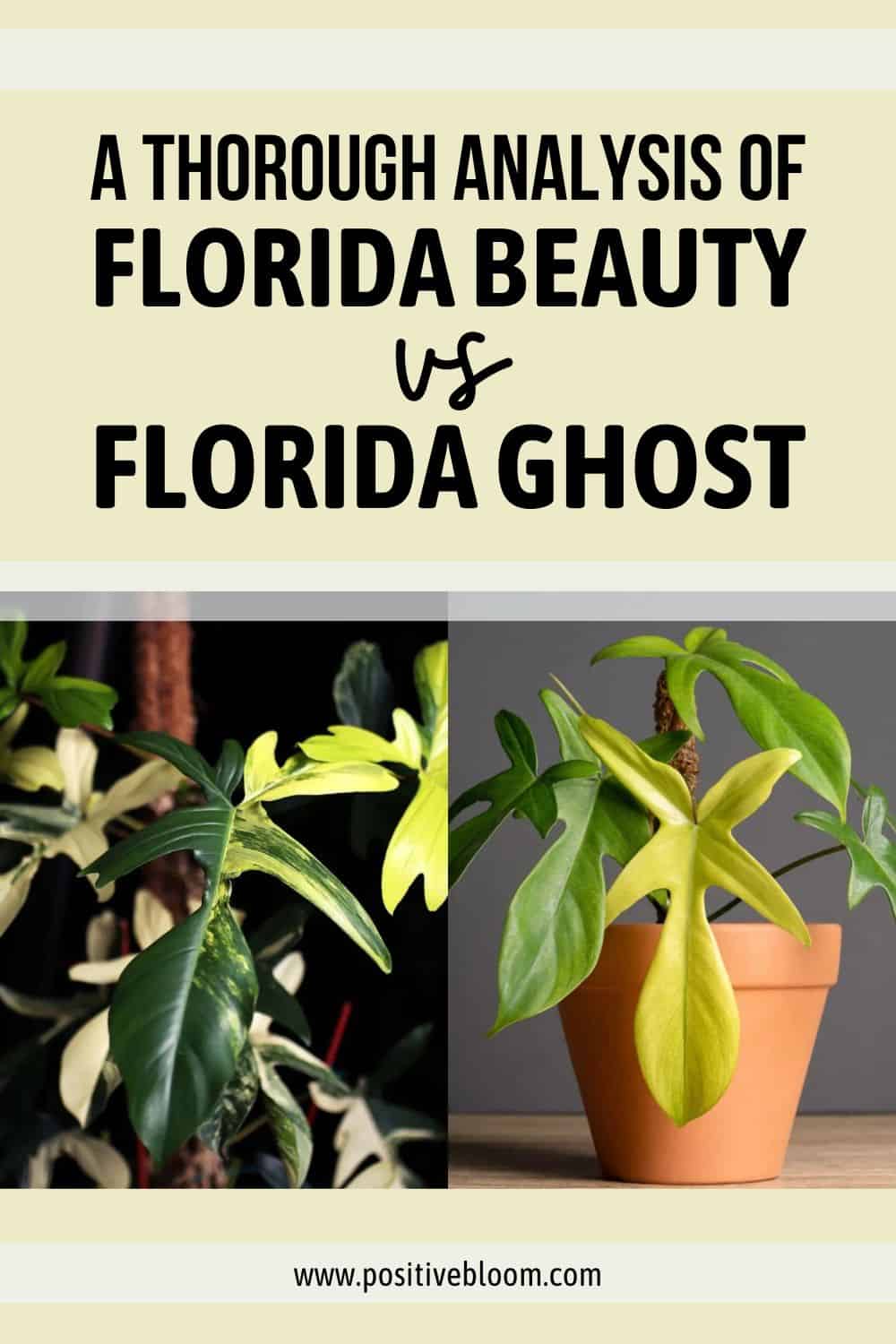Identifying plant species can sometimes be really difficult, and many plants having the same name doesn’t make the job easier. For example, there are two plants known as “Florida Beauty”, and they aren’t even in the same genus!
There is the Dracaena surculosa Florida Beauty and the Philodendron Florida Beauty. So yeah, it can get a little confusing! It’s even messier within the Philodendron genus, where each plant looks similar to its cousin.
Today, we are going to do a thorough analysis of Florida Beauty vs Florida Ghost to help you understand the differences and similarities between these two lovely houseplants!
Florida Beauty Vs Florida Ghost: Key Differences
There are over 400 different species within the Philodendron genus, and many of them are made by crossing two Philodendrons. Because of that, we now have numerous Philodendrons that look exactly alike, even though we are talking about two different varieties.
For instance, the Philodendron Florida Ghost was created by crossing the Philodendron Pedatum and Philodendron Squamiferum. This plant inherited more traits from the Philodendron Pedatum, which is why they often get mistaken for one another. (You can also check out the analysis of P. Florida Ghost vs P. Pedatum.)
When it comes to the Florida Beauty vs Florida Ghost, the key differences lay in their petioles and leaves, but there are also some other characteristics. Let’s take a closer look.
If you don’t have much time, feel free to check out the table below, which contains all the information required to distinguish between these two plants.
[table id=573 /]
Petioles
When we put these two plants next to one another, we can hardly tell the difference between them. However, when you get a closer look, you can notice that the petioles of Florida Beauty are bumpy and reddish, while the Florida Ghost has smooth, dark green petioles.
The Florida Ghost can also have a reddish color that they inherited from the P. Squamiferum. Therefore, I would advise you to look at the textures.
Leaves
We immediately have to exclude the leaf shape since they both have multi-lobed leaves. Luckily, they have different variegations. The Florida Beauty produces dark green leaves that have creamy and white variegations on their surfaces, which is why it is also referred to as the Florida Beauty Variegata and Magic Mask.
These variegations look like splotches, and they are unique for every leaf.
The Florida Ghost’s leaves don’t have any variegations. However, this plant produces white leaves on top of the plants, hence the name Florida Ghost. These leaves can turn green over time.
Other Characteristics (Dormancy, Origin, Growth Habits)
Let’s talk about the origin first. While both plants originate from Central and South America, the Florida Beauty can also be found in the Caribbean. These tropical plants are both climbers that produce long vines and stems.
You might even notice the prominent red stems on the Florida Beauty variety. This cultivar can reach up to 90 feet tall, while the Florida Ghost cultivar can only reach up to 10 feet tall.
Both indoor plants need something to climb on, whether it is a moss pole or some other alternative.
The F. Beauty grows during the winter, which means that it doesn’t enter regular plant dormancy. The Ghost cultivar does enter full dormancy during the winter season, so you should adjust plant care during this period.
These are some rare Philodendron species that are often cultivated indoors. Some other rare plants include the Philodendron White Knight plant, the Philodendron Florida Green plant, the Philodendron Melanochrysum plant, and the Philodendron Warscewiczii.
You can combine these Philos with some other tropical plants, such as Monsteras, Pothos, and Alocasias because they have similar growing requirements.
Florida Beauty Vs Florida Ghost: Similarities
Now that we have covered the key differences that you can use to differentiate between these two plants, let’s talk about their similarities. Both the Florida Beauty and Florida Ghost belong to the Araceae family, also referred to as aroids.
They are usually grown indoors, though some growers plant them outside and fashion them to climb up trees or a trellis. You have to take into consideration that these are not frost-hardy plants, and they thrive in USDA hardiness zones 9 to 11.
The key similarities are their growing requirements. Therefore, we should take a look into their plant care!
Soil Requirements
The Florida Philodendron prefers organic and well-draining soil.
You can purchase an aroid potting mix because this plant is an aroid, though you can also use a succulent or monstera mix. It would be best if you combined certain ingredients to create your own soil mix.
Make sure that all organic materials are dispersed uniformly when adding perlite, sphagnum moss, peat moss, or orchid bark to the universal potting mix.
Good drainage is important since they need to have constantly moist soil. It is also important that you grow them in pots with drainage holes in the bottom. These holes will ensure that all the excess water drains out.
Water Requirements
We have already mentioned that you have to keep the soil moist. There is a fine line between moist and soggy, so you will have to be extra careful as these plants can easily get overwatered.
Overwatering usually results in root rot, which is a deadly fungal disease that can completely ruin your plants.
The best piece of advice I can give you is to always check the soil before watering. See if the top few inches of the soil have dried out before watering the plant again. You can either use your thumb or some chopsticks.
If the soil has dried, then you should water the plant. Otherwise, postpone watering for a few days.
I usually water my Philodendrons once a week, though the watering needs are affected by different factors such as temperature and humidity, so it could be hard to determine a universal watering schedule.
Read also: What Is The Best Water For Plants? Find Out The Answer Here!
Light Requirements
Since both of these plants are tropical, they are used to growing under large trees in partial shade. Therefore, you should also provide them with similar light conditions.
They thrive in locations where they can receive enough bright indirect light. Keep them away from direct sunlight exposure because it can burn those lovely leaves. However, low light conditions are also a big no-no, especially because the leaves can lose their beautiful variegations.
I would recommend you keep them near an east-facing window, where they will receive some morning sun and bright light throughout the day. If your plant is rather sensitive, you can also put it in a north-facing window.
If you can’t find the perfect location in your house, you can always get some grow lights on Amazon or Etsy, just keep your plant around 5 inches away from the grow lights so that it can receive enough indirect light.
You should use grow lights for the Florida Ghost plant if you want to see those leaves remain white. The plant is used to receiving 12 hours of light followed by 12 hours of darkness, so be sure to turn them off every 12 hours.
Temperature Requirements
Tropical regions are warm and humid, which is why you should also keep these plants nice and warm. They prefer temperatures between 60 and 80 degrees Fahrenheit; anything higher would be harmful.
These Philos are not frost-hardy, so keeping them outdoors in an area where the winters get particularly cold is not advisable. You should also be careful where you put them indoors.
For instance, you should keep them away from drafty windows, vents, and ACs, as well as space heaters and fireplaces.
Humidity Requirements
High humidity is the Philodendrons’ favorite environment!
Luckily, they can also adapt to moderate humidity levels, though they might not have that special glow. Keeping humidity levels around 60% is ideal for both of these Philodendrons.
If you want to improve humidity, there are a few options that you should look into. Firstly, you can purchase a humidifier. This is probably the easiest option.
However, if you don’t want to spend any money, you can mist your plants on a daily basis instead. In addition, you can also create a pebble tray or put the plants in a more humid room (kitchen or bathroom). Grouping the plants is also a great option for improving humidity.
Fertilizer Requirements
These plants are relatively slow growers, so they won’t be needing large amounts of fertilizers during the growing season. You can use balanced fertilizer that contains high amounts of nitrogen since this nutrient is crucial for the production of new leaves.
It is recommended to dilute fertilizer to half strength and use it monthly during the growing season. Don’t use too much fertilizer, as those chemicals and salts can build up in the soil and prevent the plant’s roots from absorbing nutrients and water.
Always follow the instructions displayed on the packaging.
Ease up with fertilization during the winter season as the plant enters dormancy. Even though the Florida Beauty doesn’t enter dormancy per se, it is still not actively growing like it would during the growing season, which is why you should avoid fertilizing it.
Repotting
You won’t need to frequently repot your Philodendrons because of their relatively slow growth.
My little ghost only required repotting after three years!
But you should always check to see if the roots have started emerging from the drainage holes, as it is typically a sign that the plant needs to be repotted.
The plant must constantly have enough room for its roots to grow and spread. When repotting, use a pot that is 2 inches larger than your current one, and make sure to use fresh soil. Inspect the roots to see if there’s any rotting.
Pruning
Pruning is not a crucial step in the plant care guide since these plants are not fast growers.
You can get rid of any brown leaves that appear damaged and unhealthy at the beginning of the new growing season. You should also trim off any damaged stems and vines.
I would recommend you clean the leaves regularly as dust can gather on their surfaces and clog their pores, which prevents them from breathing.
Propagation
Propagating Philodendron plants is relatively easy. If you are a beginner gardener, you can follow the instructions down below. Here’s how you do it:
1. Use the correct tools. You should absolutely be cautious about the tools you use while working with a rare plant to prevent harming both the mother plant and the young stem cutting. Utilizing sterilized shears is the best option.
2. Your stem cutting should have at least two leaves and nodes that will sprout roots and encourage new growth.
3. Depending on whatever is simpler for you to maintain, you can either place the cutting in water or soil. Since I could see the tiny roots forming, I carefully soaked the cuttings in the water.
4. You should replace the water after three days if you have decided to put your cutting in water. But if you choose soil, then put it in a mix with sphagnum moss and water frequently to keep the soil moist.
5. Ensure that the cutting receives sufficient indirect sunlight and is kept at the proper temperature.
6. When the roots are about three inches long, remove them from the water and plant them in a container with potting soil. Place your new plant in the pot that will serve as its new home if you have already put the cutting in the soil.
Common Issues
Unfortunately, annoying pests and fungi can cause some issues with these plants, especially if they are grown outdoors. In addition, improper growing conditions can result in some issues.
Let’s take a closer look.
Pests & Diseases
These plants are frequently invaded by mealybugs and aphids, which like to steal plant juices and nutrients. Aphids are relatively tiny and barely visible to the naked eye, so you might need a magnifying glass to determine their presence. Mealybugs are white, cotton-like pests that usually reside on leaves and stems.
Spraying an organic solution such as neem oil on your plant will get rid of these little thieves, but you can also use insecticides and pesticides.
The Erwinia amylovora bacteria is the source of a widespread disease known as “fire blight,” which is frequently found in Philodendron Florida plants.
This may result in the leaves getting brown and crispy, which will cause the branch to wilt, harming the general health of your plant. However, you can avoid this by removing any leaves with discoloration right away.
Cut the branches or leaves using sterile shears or scissors, and refrain from fertilizing them because you might have been unintentionally nourishing the bacteria all along.
Check out this video to see some easy ways to get rid of mealybugs and aphids:
Changing Leaves
The health of your plant is reflected in the appearance of the leaves. The leaves on your plant will be the first to respond if anything goes wrong. Those lovely white and light green leaves may fade to an unsightly brown.
If this has happened to your plant, low humidity may be the problem.
These plants require some humidity to survive, despite the fact that they can endure lower humidity levels.
Yellowing leaves are a sign of overwatering. Root rot and other problems with your plant’s general health can result from overwatering. Therefore, if you notice yellow leaves, you might wish to reduce your watering habits. In case of root rot, repot the plant and trim any decaying roots.
If leaves appear paler than usual, the issue might be a lack of nutrients, so never forget to fertilize your plant!
Frequently Asked Questions
1. Is the Florida Ghost the same as the Florida Beauty?
No, these are not the same plant. In fact, these are two Philodendron varieties that look quite similar, though they are not the same species. However, their growth habits and growing requirements are almost the same.
2. What is the difference between the Florida Beauty and Florida Ghost?
The key differences include their leaves and petioles. While the Florida Beauty has somewhat rough petioles and leaves with white and creamy variegations, the Florida Ghost has green and white leaves with smooth petioles.
Both plants are climbers, but the Florida Beauty can reach up to 90 feet tall in nature, while the Florida Ghost can reach up to only 10 feet tall.
Since we are talking about two Philodendrons, their plant care and propagation methods are quite similar.
3. What are the best ways to propagate the Florida Beauty?
The best way to propagate any Philodendron species is by stem cuttings. All you have to do is find a healthy stem that has at least two nodes, cut it with sterile shears, and put it in water or soil. Keep the cutting in a warm place with lots of indirect sunlight. The roots will develop in no time!
Another method for propagation is the air-layering method, though this is used more by experienced gardeners.
Final Thoughts
After our thorough analysis of Florida Beauty vs Florida Ghost, do you think that you would be able to differentiate between these two plants?
Even though they look astonishingly similar, just check out their leaves and see if there are any variegations — if so, then you are probably dealing with a Florida Beauty plant. If there are some new white leaves, then you are probably dealing with a Florida Ghost plant.
Remember to take good care of both of these plants as they are pretty rare, so you would have a hard time finding a new one for replacement.
I hope this article was helpful.
Until next time!
Like this post? Share or pin it for later!

